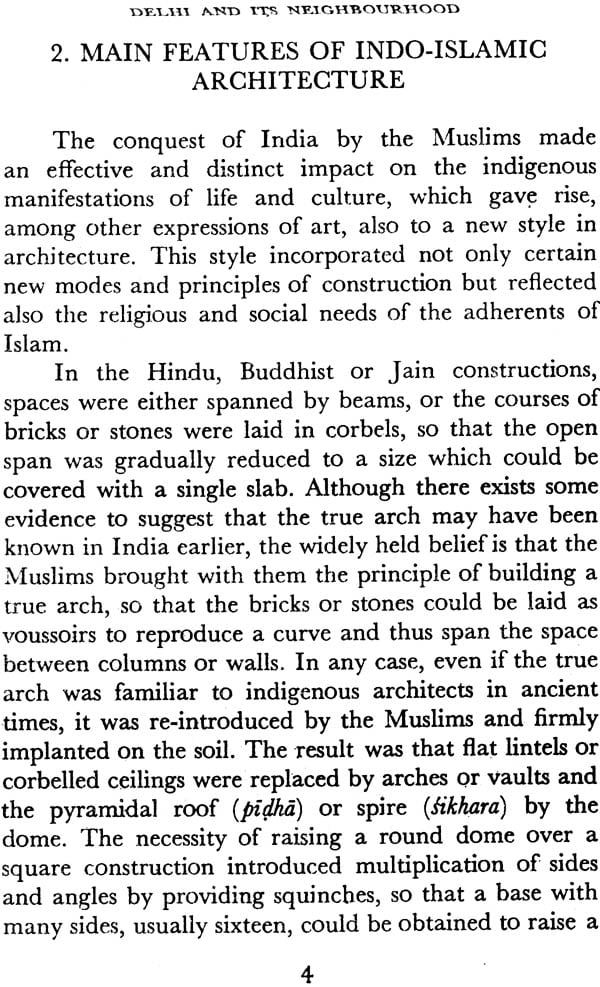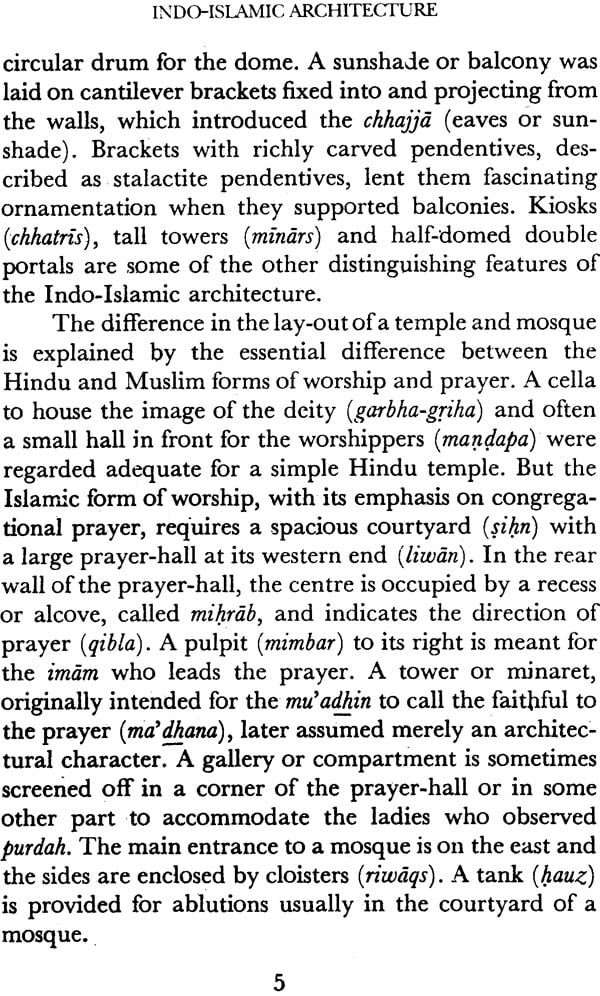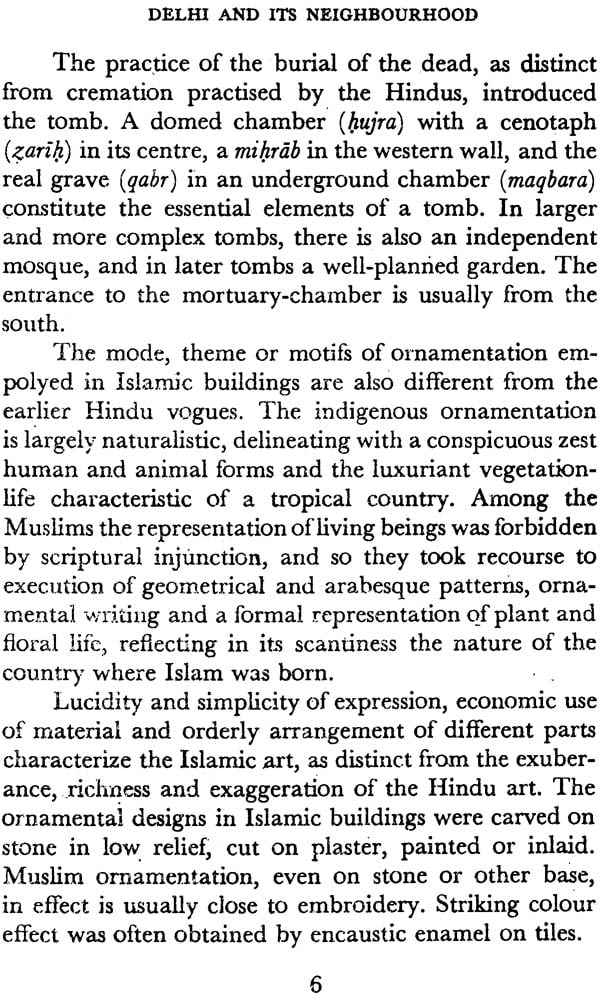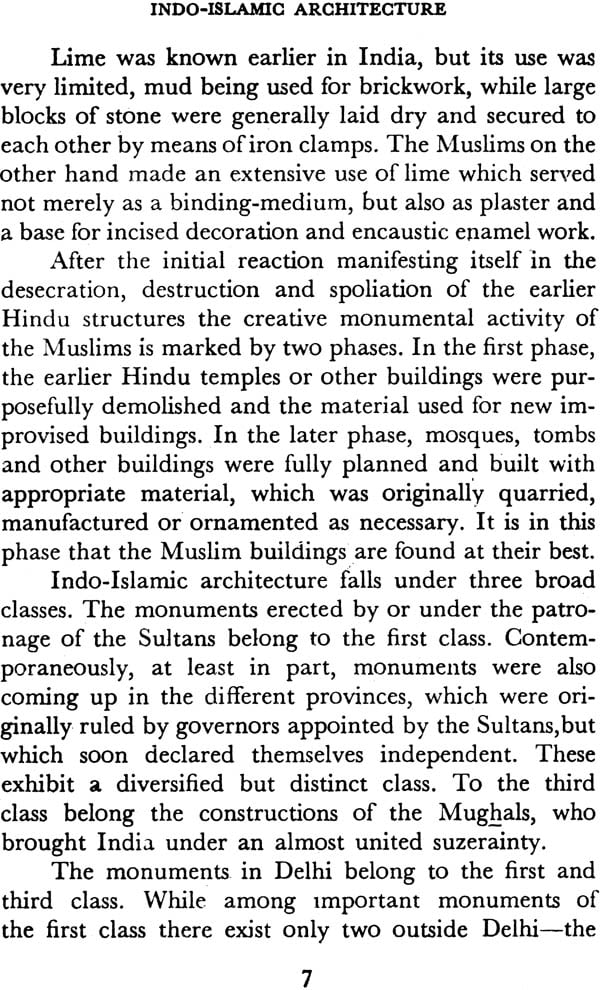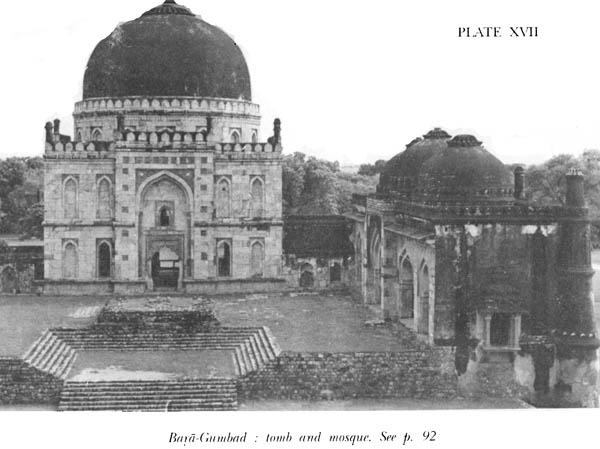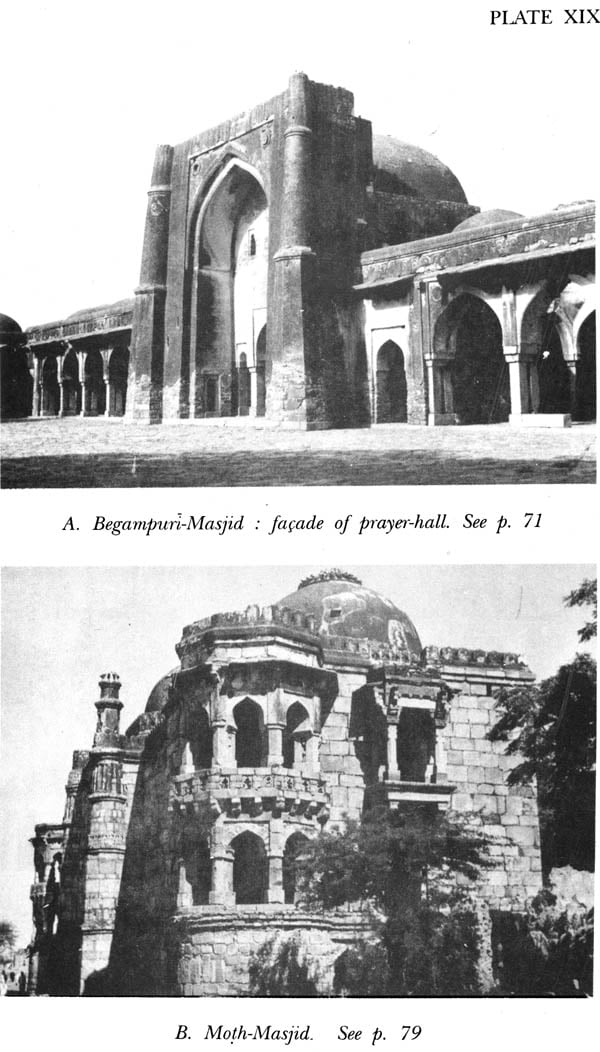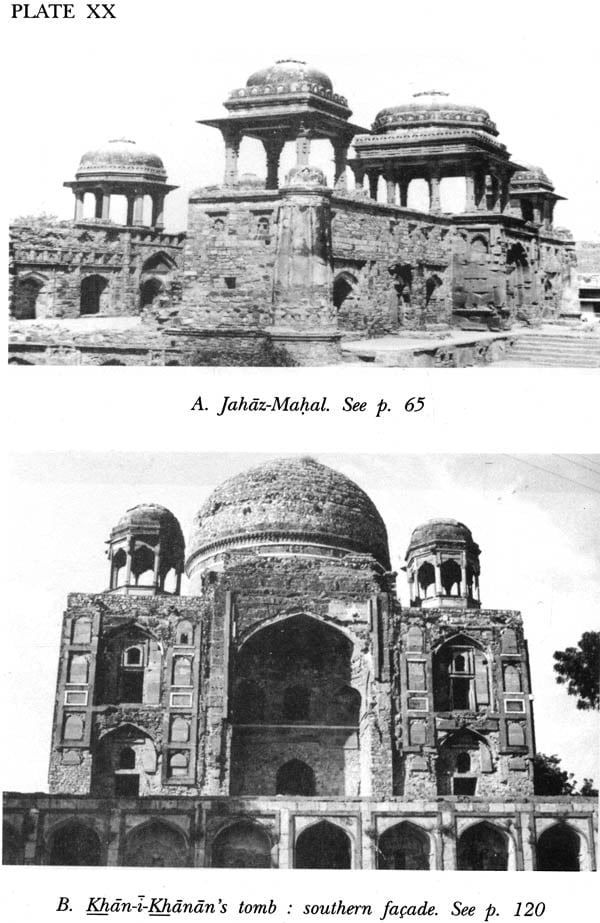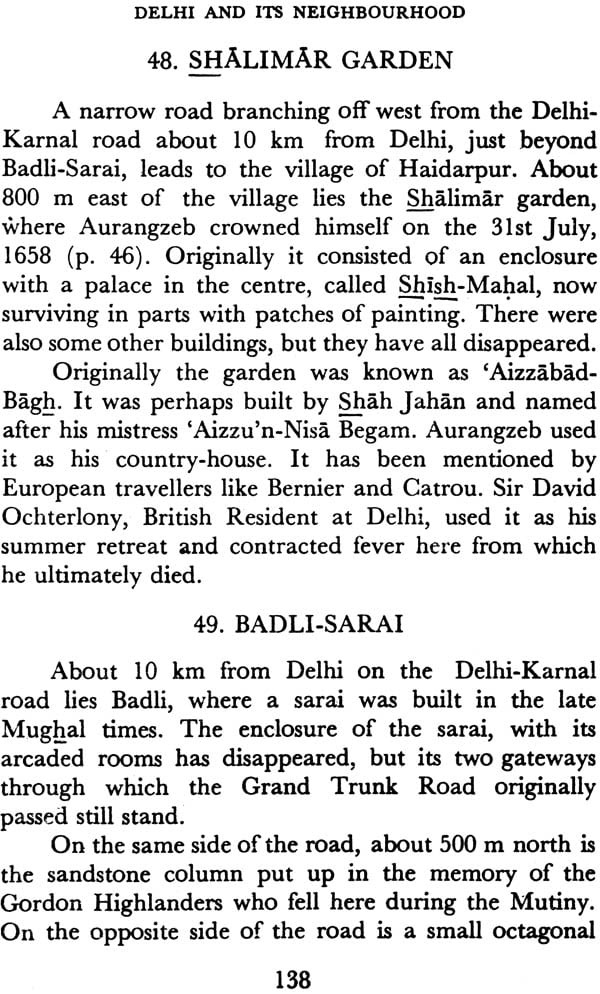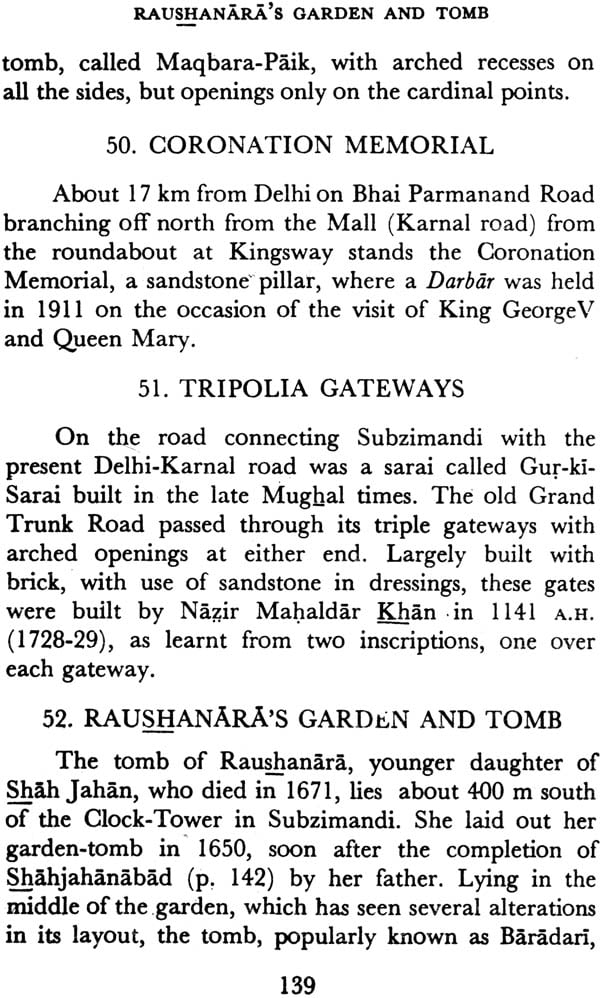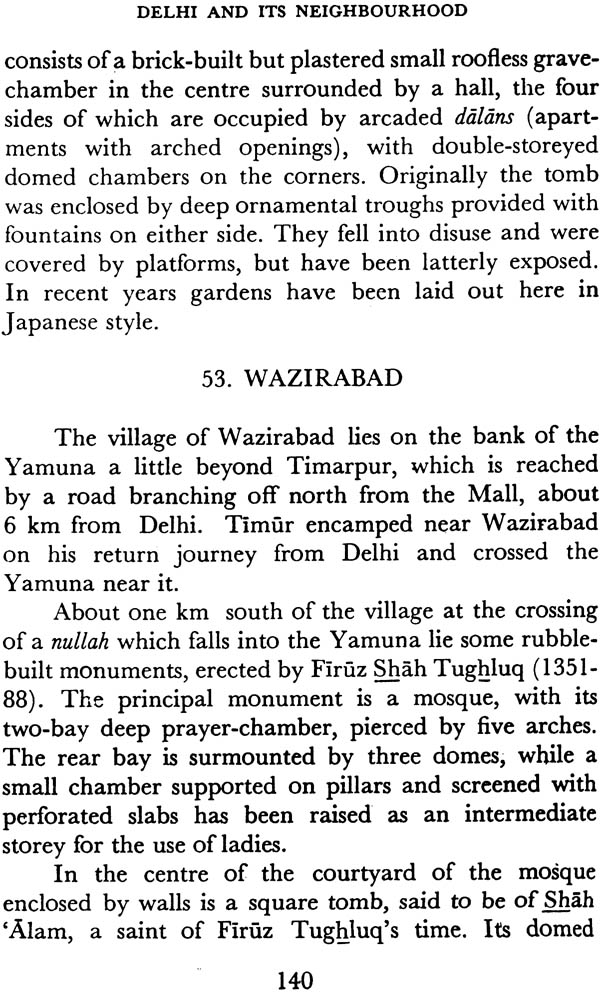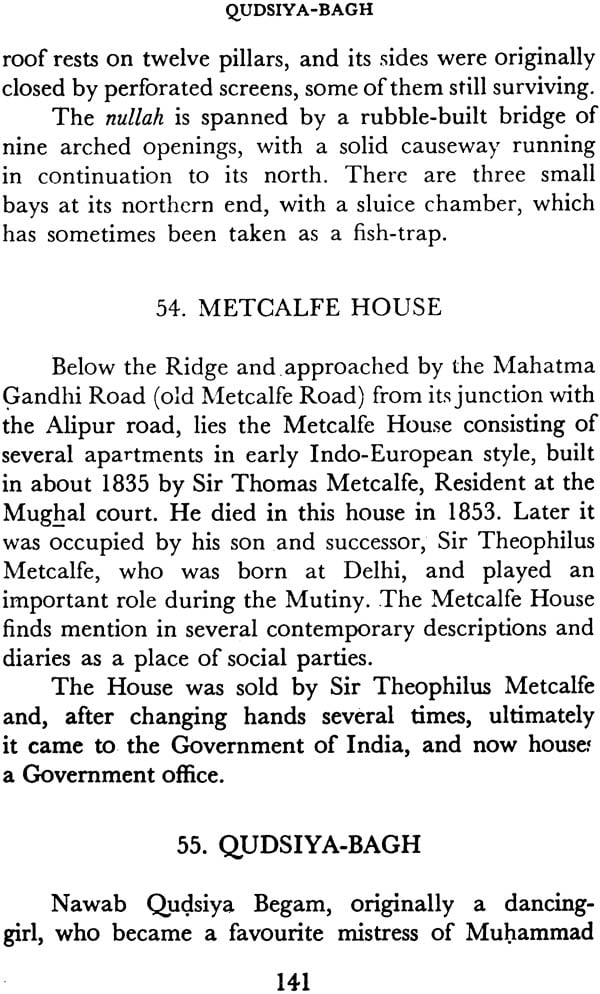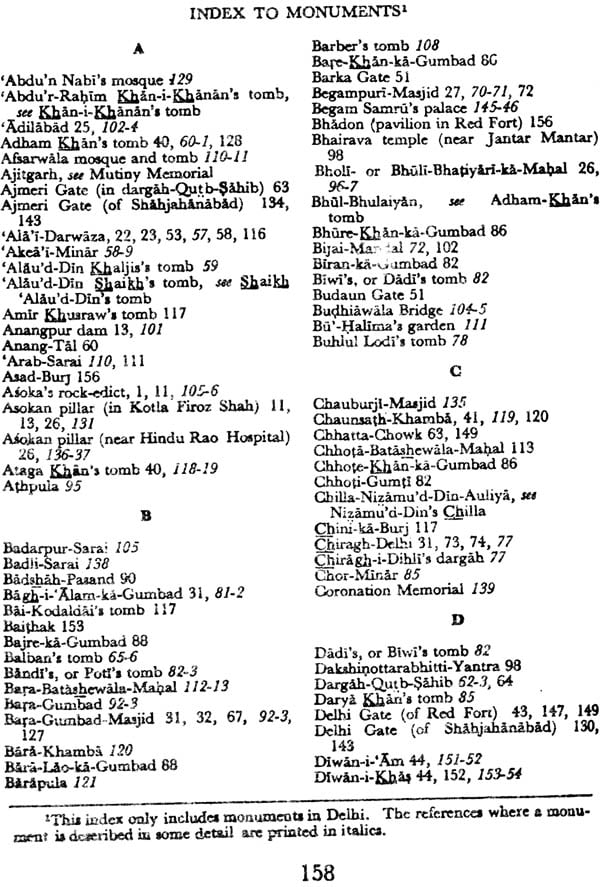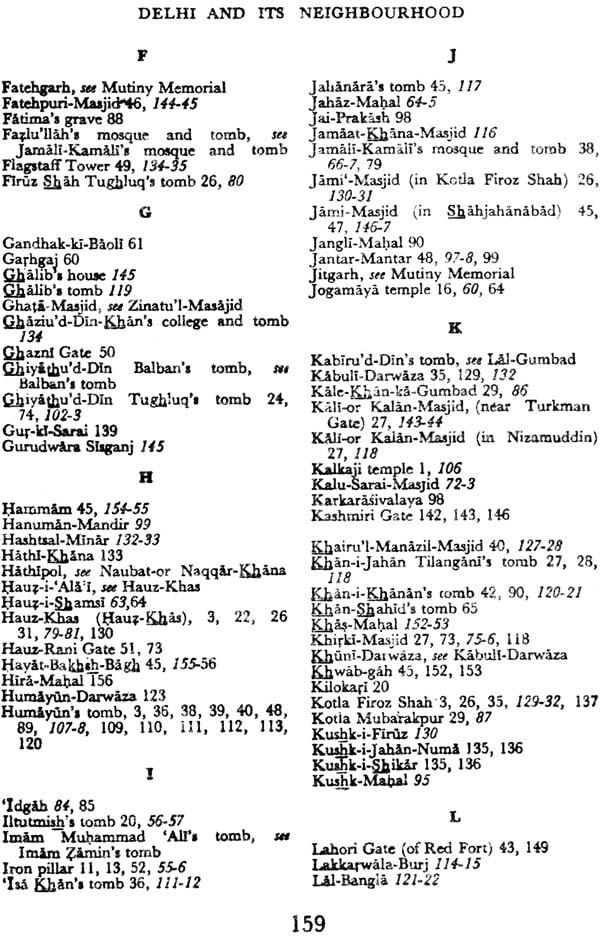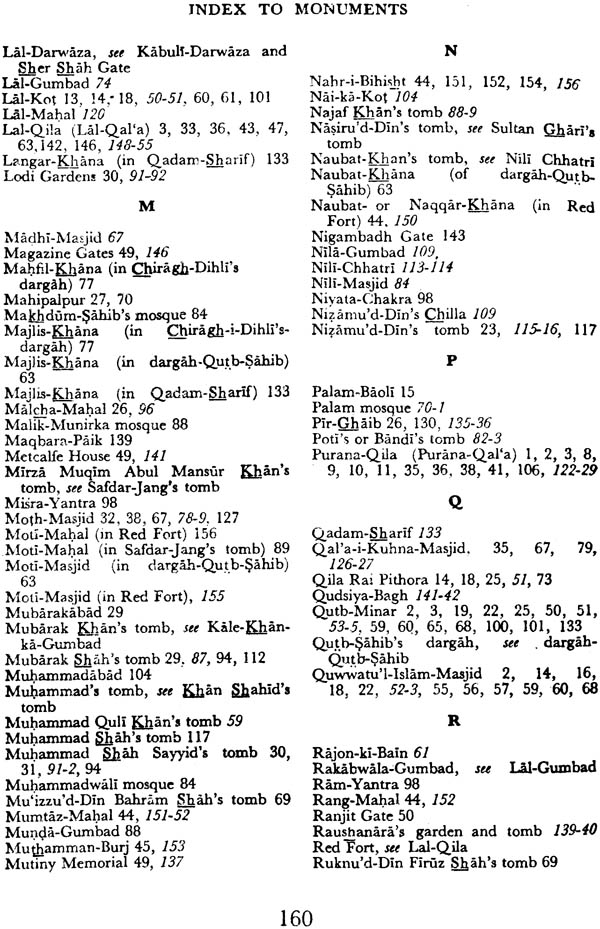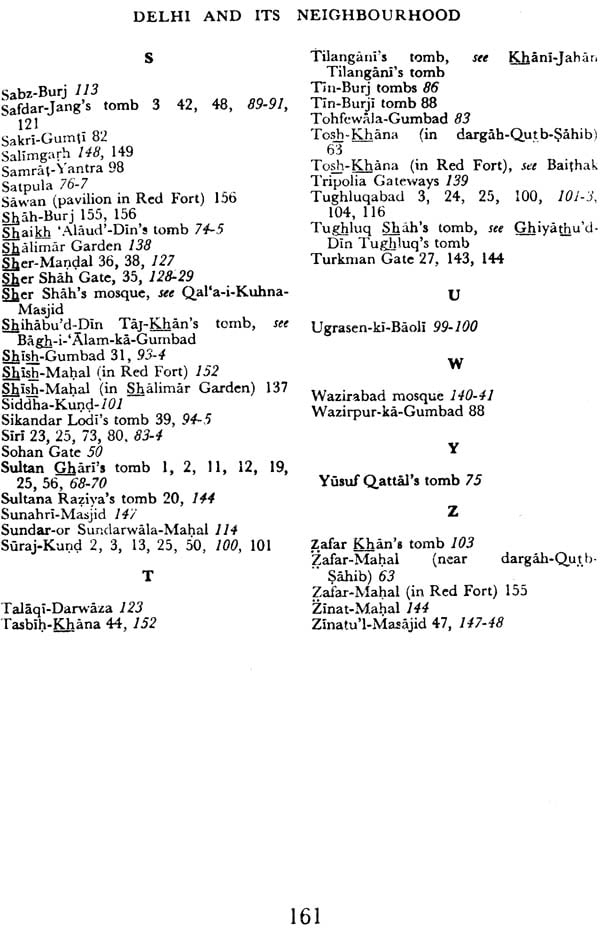
Delhi and Its Neighbourhood
Book Specification
| Item Code: | NAE083 |
| Author: | Y. D. Sharma |
| Publisher: | Archaeological Survey of India |
| Edition: | 2001 |
| Pages: | 174 (34 B/W Illustrations) |
| Cover: | Paperback |
| Other Details | 8.5 inch x 5.5 inch |
| Weight | 270 gm |
Book Description
Since the appearance of the first edition of this book in 1964, new discoveries have been made in Delhi. The most illuminating among these is the find of rock-edict of Asoka. Less sensational, but no less elucidating for Delhi’s past, are the results of the recent excavations at Purana-Qila. The present edition, which has been fully revised, includes brief details of all these discoveries, Some new illustrations have also been added in this edition. The Addition of the index to monuments, it is hoped, will enhance its utility.
The Transliteration of Persian words and names poses certain difficulties in a book of this nature which is intended primarily for a leisurely and more inquisitive itinerant. A via media has, therefore, been struck. The names of localities and popular monuments have been spelt as shown in the Delhi Guide Map Published by the Survey of India with minor modifications and without any diacritical marks. Where the name of such a monument occurs for the first time, its proper spelling is given in brackets. Otherwise the Arabic letters have been transliterated in accordance with the principles usually followed in the Epigraphic Indica-Arabic and )Persian Supplement published by the Archaeological survey of India. Letter Zal has, however, been represented by dh, swad by s and zwad by z. Words like sultan, Sarai etc. which have become part of English language, have been printed without diacritical marks . The transliteration of words of Sanskrit. Hindi or indigenous origin follows the principles for these languages.
I am grateful to my colleagues Dr. Z. A. Desai, Shri M.C. Joshi and Shri W.H. Siddiqi for their several suggestions which have been incorporated in this edition. I must also acknowledge with thanks the assistance of several other colleagues: Shri Narendra Nath has gone through the proofs and has checked the transliterated spelling, Shri S. N. Jaiswal has prepared the index to monuments, Shri B. P. Asthana has taken some new photographs specially for this edition, Shri S.S. Saar has prepared the map of Delhi and the cover of this edition and Shri M. S. Mani the two plans.
Few Cities in India Could Claim the Long Continuity and status that Delhi has enjoyed. In the Dim protocitadel Purana-Qila (Qal’a-i-Kuhna) lay perhaps Indra Prastha, capital of the heroes of the epic Mahabharata. This settlement., Known by different names at different times, has been recently excavated by the different names at different times, has been recently excavated by the Archaeological Survey of India on a large scale revealing a continuous occupation from the Mauryan to Early Mughal period –from the third century B.C. to the sixteenth century A.D. Earlier relics of the Mahabharata age, if represented by the characteristic Painted Grey ware, as believed by some scholars, have turned up among the rubbish and debris of later dates, evading thus, the archaeologist’s anticipated horizons, yet prompting him not to relinquish the search for a distinct settlement of the Painted Grey Ware people in Delhi.
A glorious Chapter to Delhi’s history was added as recently as 1966 with the discovery of an inscription of the maurya emperor asoka (273-36b.c) engraved on rugged rock of an outcrop of the Aravallis, near Srinivas puri west of Kalkaji temple (pp. 10, 105)
In the Righth century, or a little earlier, a large temp;e existed at the site of the Sultan Ghari’s tomb, 8km west of the Qutb-Minar. The Temple was erected probably by some Rajputs established themselves in the case, the Tomar Rajputs established themselves in the hills south of delhi, in the ninth or tenth century. Later in the twelfth century, they were overthrown and supplanted by the Chauhan (Chahamana) Rajputs. Several during the Rajput rule. The Chauha ruler, were erected during the Rajput rule. The Chauhan ruler, prithviraja, was defeated by the Muslims towards the close of the twelfth century, and Delhi thus became the capital, initially of the Pathan Sultans and later of the Mughals. In the British Period, when the country came under a it was shifted to Delhi in 1911. The independence of the country in 1947 did not interrupt that status.
With such a variegated history, it is not surprising that Delhi Should abound in relics and remains of its long chequered past. The remains of its proto historic and historic periods lie buried below later structures. Some idea of the life of people during these periods is provided by the antiquities and structural remains exposed at the Purana-qila. A glimpse of the Rajput art and architecture may be had from the reservoir of Suraj-kund, ramparts and carved, though mutilated, pillars and ceiling-slabs of temples re-used by the early Muslims in Sultan Ghari’s tomb and the Quwwatu’Islam mosque. But it is the mosques, tombs and citadels of the Pathans and Mughal that constitute the most monumental remains of Delhi. They Are often spoken of as constituting seven cities.
Amongst more than thirteen hundred listed monuments of Delhi, about one hundred and forty are briefly described in this short guide. A visitor must select the monuments he wishes to visit according to his interest and the time at his disposal Suraj Kund, Tughluqabad, Qutb-Minar, Hauz-Khas, Humayun’s tomb, Purana-Qila, Safdar-Jang’s Tomb, Kotla Firoz Shah and the Red fort should perhaps figure even in a short itinerary; but if he must curtail it further, he must visit at least suraj-kund, Qutb- Minar and the Red fort.
Most of the monuments described here are approachable by roads (pl. XXVII) and can be reached b bus or hired conveyance. The Transport corporation runs two special services daily in winter, starting from the Scandia House in Connaught circus, one in the forenoon at 9.00 a.m. and the other in the afternoon at 2.15 p.m., covering a different set of monuments and other places of interest in each of its trips. In summer months there is only one long trip, the bus leaving at 7.30 a.m. for further details the visitor is advised to contact either the information officer of the Delhi Transport Corporation or the Tourist Office at 88 Jan path.
In a guide of this size, the descriptions have necessarily to be brief. A select bibliography is added at the end for the guidance of those who would like to study the monuments in some details. The author has reproduced or adapted some of the material from his chapter on the Islamic monuments published in the archaeological remains, monuments and museums (New Delhi. 1964)
| Preface | ix | |
| 1 | Introduction | 1 |
| 2 | Main features of Indo-Indo-Islamic Architecture | 4 |
| 3 | History and Architecture | 8 |
| 4 | Qutb Area | 47 |
| 5 | Mehrauli | 60 |
| 6 | Mehrauli bypass | 64 |
| 7 | Sultan Ghari's Tomb | 65 |
| 8 | Mahipalpur | 68 |
| 9 | Palam mosque | 70 |
| 10 | Begampur | 70 |
| 11 | Malayanagar area | 74 |
| 12 | Chiragh-delhi | 77 |
| 13 | Moth-Masjid | 78 |
| 14 | Hauz-Khas | 78 |
| 15 | Green Park Area | 81 |
| 16 | Hauz-Khas Enclave | 83 |
| 17 | Darya Khan's tomb | 85 |
| 18 | New Delhi South Extension I | 86 |
| 19 | Mubarak Shah's Tomb | 87 |
| 20 | Ramakrishnapuram area | 87 |
| 21 | Najaf Khan's Tomb | 88 |
| 22 | Safdar-Jang's Tomb | 89 |
| 23 | Lodi Gardens | 91 |
| 24 | Kushk-Mahal | 95 |
| 25 | Southern Ridge | 95 |
| 26 | Jantar-Mantar | 97 |
| 27 | Hanuman-mandir | 99 |
| 28 | Ugrasen-ki Baoli | 99 |
| 30 | Anangpur Dam | 100 |
| 31 | Tughluqabad Area | 101 |
| 32 | Budhiawala Bridge | 104 |
| 33 | Badarpur | 105 |
| 34 | Asoka's Rock-edict | 105 |
| 35 | Kalkaji Temple | 106 |
| 36 | Humayun's Tomb area | 107 |
| 37 | Sundar-Bagh Nursery Area | 114 |
| 38 | Nizamuddin | 115 |
| 39 | Lal Bangla | 121 |
| 40 | Purana- Qila Area | 122 |
| 41 | Abdu's Nabi's Mosque | 129 |
| 42 | Kotla Firoz Shah | 129 |
| 43 | Kabuli-or khuni-Darwaza | 132 |
| 44 | Hashtsal-Minar | 132 |
| 45 | Qadam-Sharif | 133 |
| 46 | Ghaziu'd din Khan's college and tomb | 134 |
| 47 | Northern Ridge | 134 |
| 48 | Shalimar Garden | 138 |
| 49 | Badli-Sarai | 138 |
| 50 | Corontion Memorial | 139 |
| 51 | Tripolia Gateways | 139 |
| 52 | Raushabara's Garden and Tomb | 139 |
| 53 | Wazirabad | 140 |
| 54 | Metcalfe House | 140 |
| 55 | Qudsiya-Bagh | 141 |
| 56 | Shahjahanabad | 142 |
| 57 | Salimgarh | 148 |
| 58 | Lal-Qila Or Red Fort | 148 |
| Select Bibliography | 157 | |
| Index to Monuments | 158 |
